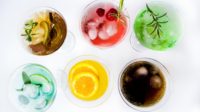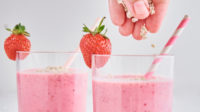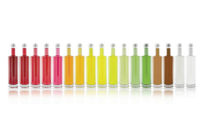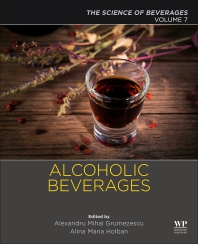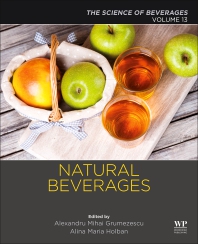Blending functionality with color concepts in beverages
Color choice vital in conveying functional attributes

The increasing interest in functional beverages often focuses on the attributes these ingredients can provide consumers. However, as these beverages and ingredients proliferate, the colors market is playing a vital role in supporting this trend.
“Mintel research indicates that consumers want to improve their wellbeing,” says Meghan Skidmore, content marketing manager at Sensient Food Colors, St. Louis. “Almost half of U.S. consumers who have experienced stress/anxiety in the past year are open to trying alternative approaches to stress management, while more than half of U.S. consumers are actively focusing on hydration and/or relaxation for their health and wellness,” she says citing 2024 Mintel data.
Skidmore highlights that it is important for consumers to make the connection between these functionalities and the food and beverages in order to achieve market success.
“Because color is often one of the first aspects of a beverage that consumers notice, color can be used as an early signal about the functional ingredients or properties therein,” she explains. “For example, relaxation and purple go hand-in-hand, while energetic shades like orange and red can pop off a shelf. Certain colors can also emphasize ingredients used for those functional purposes, such as colors that align with certain added fruits and vegetables, like a dark brown highlighting cacao for antioxidants or a white/cloud for coconut paired with heart health.”
Alice Lee, technical marketing manager at GNT USA LLC, Dallas, N.C., notes that color choice for beverage is important as it signals the flavor, but also can send subconscious signals as to what type of product something is.
“With functional beverages, the colors are often used to help showcase the benefits,” she says. “Pastel hues can signal calm-inducing or focus-enhancing claims. For example, while intense dark purple or red can indicate the antioxidant properties of berries like blueberries, acai, or pomegranate. It’s about making choices that will resonate with the target consumer and help to build a coherent product identity.”
Kelly Newsome, global senior marketing manager of colors and savory flavors at ADM, Chicago, echoes similar sentiments.
“Consumers associate specific shades with specific functions, such as green for wellness and detoxification, red or orange for energy and vitality, and blue or purple for relaxation and calm,” she says. “Formulators should take note of these perceptions and choose colors that communicate a drink’s purpose visually, making it easier for consumers to identify beverages that align with their wellness goals.
“Additionally, with many functional drinks, such as sparkling waters, ready-to-drink (RTD) teas or shakes, featuring active ingredients like antioxidants, botanicals or biotic ingredients, there’s an increased demand for color solutions that are stable across different pH levels, temperatures and light exposures, and through various ingredient interactions, ensuring long-lasting visual appeal,” Newsome continues. “There’s also growing interest in beverages aimed at mood support, with brands using soft pastels to evoke calmness or vibrant hues to stimulate energy and focus, further expanding the palette of functional beverage colors. This includes exploring calming blues, energizing reds or comforting yellows to match the mood-supporting claims of the drink. As such, color solutions are evolving to reflect not only ingredient sources but also emotional connections and lifestyle trends.”
Beyond association between colors and the functionality attributes, experts also note the impact functional beverages are having on natural color utilization rates.
“Functional beverage trends are significantly influencing the colors market by driving demand for natural and vibrant hues that reflect health and wellness attributes,” Newsome says. “As consumers increasingly seek beverages that offer benefits ― such as energy, hydration, gut health or cognitive function ― brands are responding by incorporating colors that signal these attributes.”
This can be seen within the plant-based or dairy alternatives beverage market.
“Plant-based beverages often have natural base colors, such as the beige tone of almond or oat milk, requiring brands to explore earthier, more muted color palettes that complement these shades,” Newsome says.
Yet, some caution the obstacles that formulators can encounter when working with natural colors and functional beverages.
“It should also be noted that contemporary beverage trends such as fortification (added vitamins, protein, calcium, etc.) and simplification (low or no sugar, dairy-free, caffeine free, etc.) present special challenges for natural colors,” says Stephen J Lauro, president at colorMaker Inc., Anaheim, Calif. “Similarly, cannabis infused beverages, premium ‘craft’ beverages, and hybrid beverages that combine an energy drink with a cocktail or a coffee with a sparkling water also present unique challenges for natural colors. Never have natural color suppliers needed to understand so much about food chemistry, process engineering, packaging materials, and regulatory guidelines.
“In our color lab, a visiting marketing manager may utter one, single, simple sentence and from that simple sentence a cascade of technical, engineering, and regulatory consequences may unfold,” he continues. “Marketing goals sound easy, but without artificial colors such goals may be hard to achieve. Stated another way, soon marketing goals may have to compromise with the innate limitations of natural colors ― both technical and regulatory.”
Looking for a reprint of this article?
From high-res PDFs to custom plaques, order your copy today!





